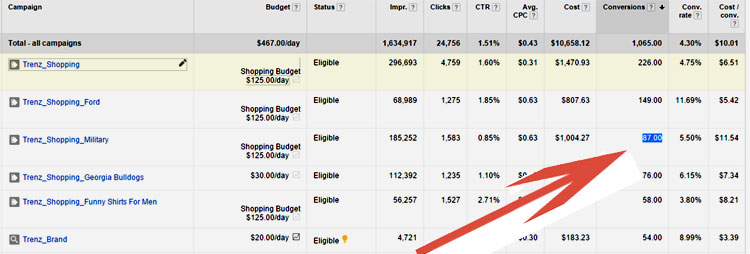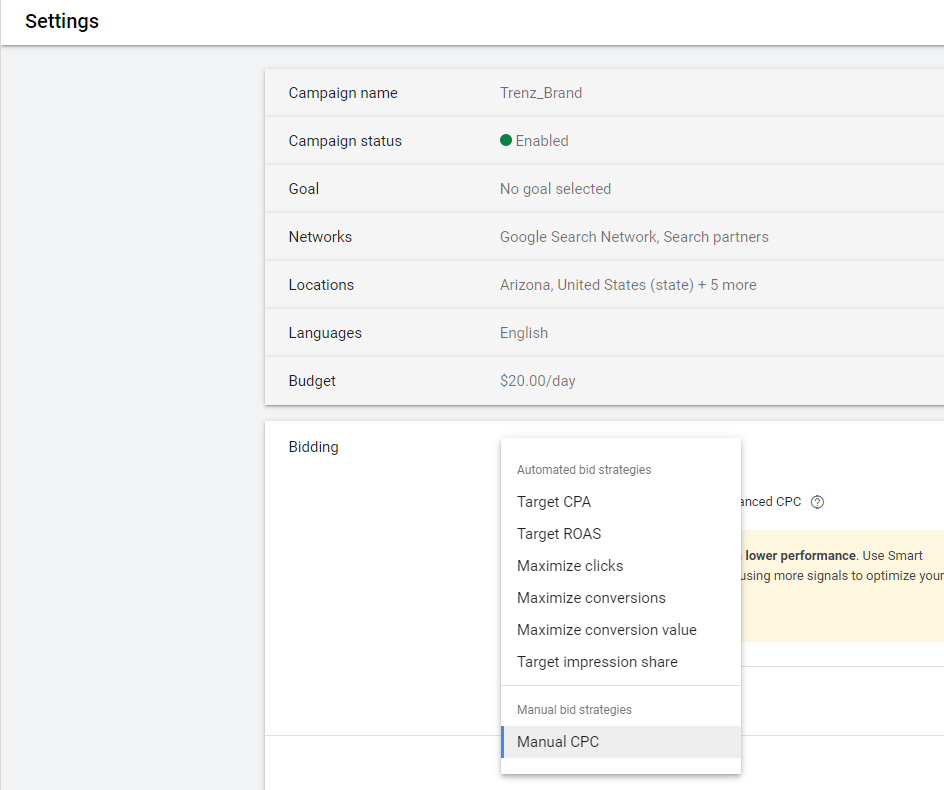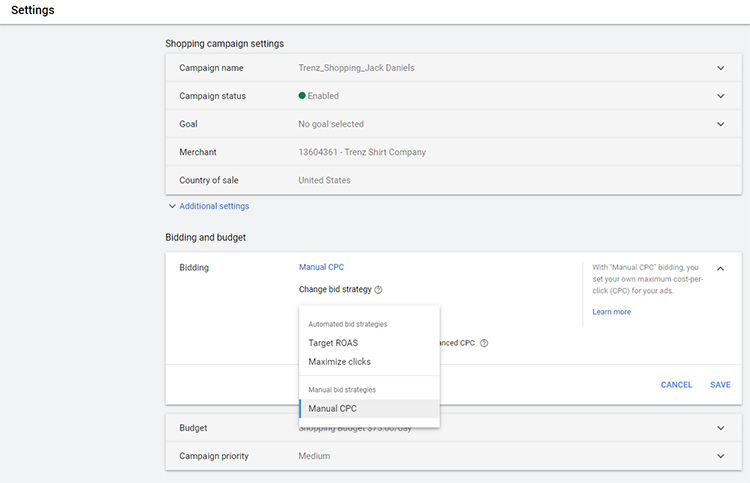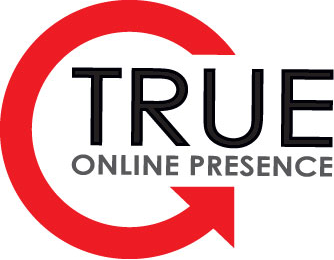The holidays have come and gone and if you are a 4th quarter seasonal eCommerce advertiser you most likely increased bids (if not, shame on you) to capture as much traffic and sales as possible during the Q4 crush.
Now that the holidays are over, your conversion rates will typically return to normal levels, yet your bids are still inflated.
So how should you restore your bid levels in the new year in order to generate maximum sales while also generating a healthy ROI?
It depends on your level of involvement in your Google Ads account, but typically you have two choices – either reviewing and adjusting bids manually or using Google’s automated bid strategies to adjust bids. This blog post will look at both options and let you decide on which or perhaps a combination of both will be best suited to re-optimize your account.
Manually Adjusting Bids
If you have sufficient time to dedicate to managing your AdWords account, I would recommend at least in part that you manually adjust bids especially for best-sellers and higher margin items. By manually adjusting bids, advertisers can determine which campaigns are still producing a high conversion rate using seasonal bid rates, while also determining issues other than the time of year that may account for lower conversion rates.
Examples, of issues that can negatively affect conversion rates include lack of inventory, competitor discounting and other on-page factors such as out of date pages or availability language.
By manually adjusting bids rather than relying on Google bid strategies, advertisers can account for these “other issues” when reviewing and ultimately determining whether to return bids to pre-holiday levels or leave bids at inflated holiday levels.
A downside of manually adjusting bids is that advertisers need to have enough data in order to enact proper decision making. While waiting for data to accumulate, CPA can sometimes increase much higher than in Q4. However, waiting and incurring this cost can often be worthwhile in discovering items that will produce a solid ROI throughout the year despite continuing to use higher Q4 optimized bids.
Let’s look at an example from one of my clients:
During December because of optimizing and ultimately increasing bids, the Military Campaign for one of my private clients skyrocketed accounting for 87 sales cumulative $3,000 in revenue; a 5.5% conversion rate; $11.54 CPA and a ROAS (rate on advertising spend) of approximately 3. It also had an average cost per click of $0.63.

Note, in order to easily look at various campaigns it is a best-practice to clearly define each campaign and to properly segment campaigns in order to not only be able to easily view past results, but also to be able to adjust various settings. For a review on the importance of segmenting campaigns for Google Shopping Campaigns review my article – How Segmenting Google Shopping Campaigns Can Boost Profitability.
For this Campaign, I originally segmented it from the rest of the Google Shopping Campaigns in mid-September of last year. Here is how it performed in October: 10 sales cumulative $402; a 2.18% conversion rate; $16.61 CPA and a ROAS of 2.4. It also had an average cost per click of $0.36.

One would assume that once the holiday shopping frenzy is complete that it would make sense to decrease bids to pre-holiday levels for this Campaign ($0.36 vs $0.63).
However, before automatically lowering bids, I continued to allow the Campaign to run as is for another 2 weeks after Christmas to see how it would perform post-holidays with holiday bids. Here were the results: 14 sales cumulative $333 sales; a 4.73% conversion rate; $6.03 CPA and a ROAS of 3.96. Oh yeah, I almost forgot, an average cost per click of $0.29 (that is a lower CPC than before the bids were raised and optimized during the holidays).

So what happened? By optimizing and increasing bids during the holidays for products within this Shopping campaign, those products performed so well that they began to receive clicks at a lower price than the bid. Remember, Google’s quality score? If not, make sure you read my article – Why Google Advertisers Need to Know Their Quality Score.
After the holidays, product ads in this campaign continued to receive clicks below the bid value and are still attaining click share and impression share at holiday levels which is helping to account for a conversion rate almost as high the two weeks after Christmas as the three weeks preceding Christmas.
What should we do with this campaign?
That is a great question and why optimizing campaigns is never dull and should never use a set it and forget it strategy. It will take deeper investigation to determine which products are performing well inside the campaign and to determine if there are any products not performing up to a desired level and adjust those bids accordingly.
However, one thing is certain; bids should not be unilaterally lowered on this campaign now that the holidays are over. In fact, it might be wise to test raising bids to gain even more click and impression share.
Google’s Automated Bidding Strategies
What should you do if you don’t have the time to dedicate to each of your campaigns or at least not to your “lesser important” campaigns?
If advertisers don’t have the needed time to dedicate to each Google Ads Campaign, they have the option of using Google’s automated bidding strategies to help ensure their spend remains aligned with their ROI goals for both Search and Shopping Campaigns.
Another option is to simply migrate existing Shopping Campaigns into Google Smart Shopping Campaigns. However, before this is done advertisers will need to be aware of the pitfalls of using Smart Shopping Campaigns. You can read more in my article – New Google Smart Shopping Campaigns – What You Need to Realize.
However, by using Google’s bidding strategies although advertisers will forfeit the ability to dive into what factors other than bid may be affecting ROI and conversion rates they will not lose the ability to eliminate unwanted searches through the use of negative keywords.
Even though not typically preferred in use with my private clients, a campaign optimized using Google’s ‘Smart’ technology is far superior to a campaign left unattended.
For Search Campaigns, Google offers the following automated bid strategies: Target CPA, Target ROAS, Maximize clicks, Maximize conversions, Maximize conversion value and Target Impression Share.

Target CPA – Google automatically will adjust an advertiser’s bid in order to get as many conversions possible at the advertiser’s selected cost per acquisition goal.
Target ROAS – Google automatically will adjust an advertiser’s bid in order to get as many conversions possible at the advertiser’s selected return on ad spend goal.
Maximize Clicks – Google automatically will adjust an advertiser’s bid in order to get as many clicks as possible within an advertiser’s daily budget.
Maximize Conversions – Google automatically will adjust an advertiser’s bid in order to get as many conversions as possible within an advertiser’s daily budget.
Maximize Conversion Value – Google automatically will adjust an advertiser’s bid in order to get as much conversion value as possible within an advertiser’s daily budget.
Target Impression Share – Google automatically will adjust an advertiser’s bid in order to get the highest search impression share possible within an advertiser’s daily budget.
Automated bid strategies can be changed once selected through the settings link. However, it is advised to allow time (typically at least 2 weeks) for a bidding strategy to have enough data before judging its success or failure and definitely before making a change to a different strategy.
Automated Shopping Strategies
For Shopping campaigns, the automated bidding strategies are a bit more limited, although those available work in the same way.
Target ROAS – Google automatically will adjust an advertiser’s bid in order to get as many conversions possible at the advertiser’s selected return on ad spend goal.
Maximize Clicks – Google automatically will adjust an advertiser’s bid in order to get as many clicks as possible within an advertiser’s daily budget.

Note, currently there is not a way to migrate a campaign from a Standard Shopping campaign to a Smart Shopping campaign. Therefore, if an advertiser would like to test a Smart Shopping campaign they will need to recreate the campaign and select Smart Shopping during campaign setup.
Final Word
I hope you didn’t think that now that the holidays were over that you could put your feet up and relax? The fact is that the beginning of the year is a critical time to optimize your Google Ads Campaigns. Having a good start to the new year can set a successful tone for the entire year.
Remember that whether reviewing your campaigns manually or creating automated bid strategies that will allow Google to automatically optimize your bids, putting a plan in place is essential and should be done immediately. Without a plan, advertisers will likely waste budget that can be used for additional advertising throughout month and throughout the year.
Looking for More Information on Google Advertising?
Check out the all new The Academy of Internet Marketing (www.theacademyofinternetmarketing.com), the premier online marketing destination for small to mid-sized e-commerce businesses serious about substantially growing their online sales plus exclusive access to me, author of Make Each Click Count, The TOP Guide To Success Using Google AdWords.
If you have the dedication and are ready to take your online sales to the next level, then The Academy of Internet Marketing was created for you. It provides the tools in the form of knowledge of what works today. Join us and see what makes us special and together we will grow your business.
If you are ready to take your online advertising to the next level, I welcome you to take a trial. It only costs $1 for access.
Happy Marketing!
Andy Splichal
ABOUT THE AUTHOR:

Andy Splichal is the founder of True Online Presence, the founder of The Academy of Internet Marketing, author and certified online marketing strategist with more than a decade and a half of experience helping companies increase their online presence and profitable revenues. To find more information on Andy Splichal, visit www.trueonlinepresence.com or read The Full Story on his blog, blog.trueonlinepresence.com

